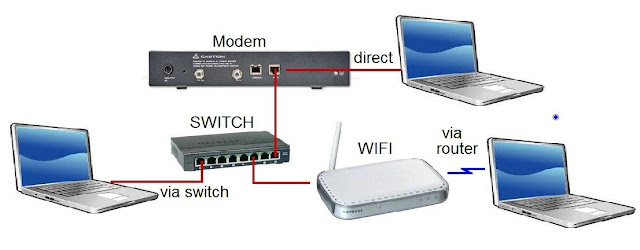Packet Switching Technology
Packet Switching Technology
When data is sent from one computer to another, it is broken into pieces
called Packets using TCP (Transmission Control Protocol) protocol. using IP (Internet Protocol), a long message up to 1500 bytes is put into packets. Each packets has the address of the sender and also the destination called IP address.
These packets are sent from one network to another till they all reach their destination. At the destination, the TCP reassembles the packets into complete message. Usually, all the packets in a single message may not take the same route through the Internet or for the same message to take the same route each time it is sent.
Long message are broken into smaller units called packets. Each packets contains a header, which includes destination and source identifiers or addresses and packet number. Packets from several sources are routed to their destinations, where they are reassembles into their original messages
The packet are sent continuously as long as there are messages to be sent. They are sent to various destination stations in a mixed sequence, which result in continually receiving data until all packets of the message are received. The receiving stations then utilize the destination address to identify packets intended for that station. Next packet number in the headers is used by the receiving stations to assemble the message into a complete and correct order. This form of network switching, called packet switching, is used with many different networks.
On the Internet, a typically packet length is about one kilobyte, or a thousand characters. A large message divided into thousand of individual packets. The beginning of an packet is called "header" and records the following information.
Source : The IP address of the computer sending the packet.
Destinations: The IP address of the destination computer.
Length: The length of the packet in bytes.
Number: The total numbers of packets in the complete message.
Sequence: The number of this packet in the whole list of packets making up this communication. This data provides the information an Internet router needs to get packets and message to their destination



Comments